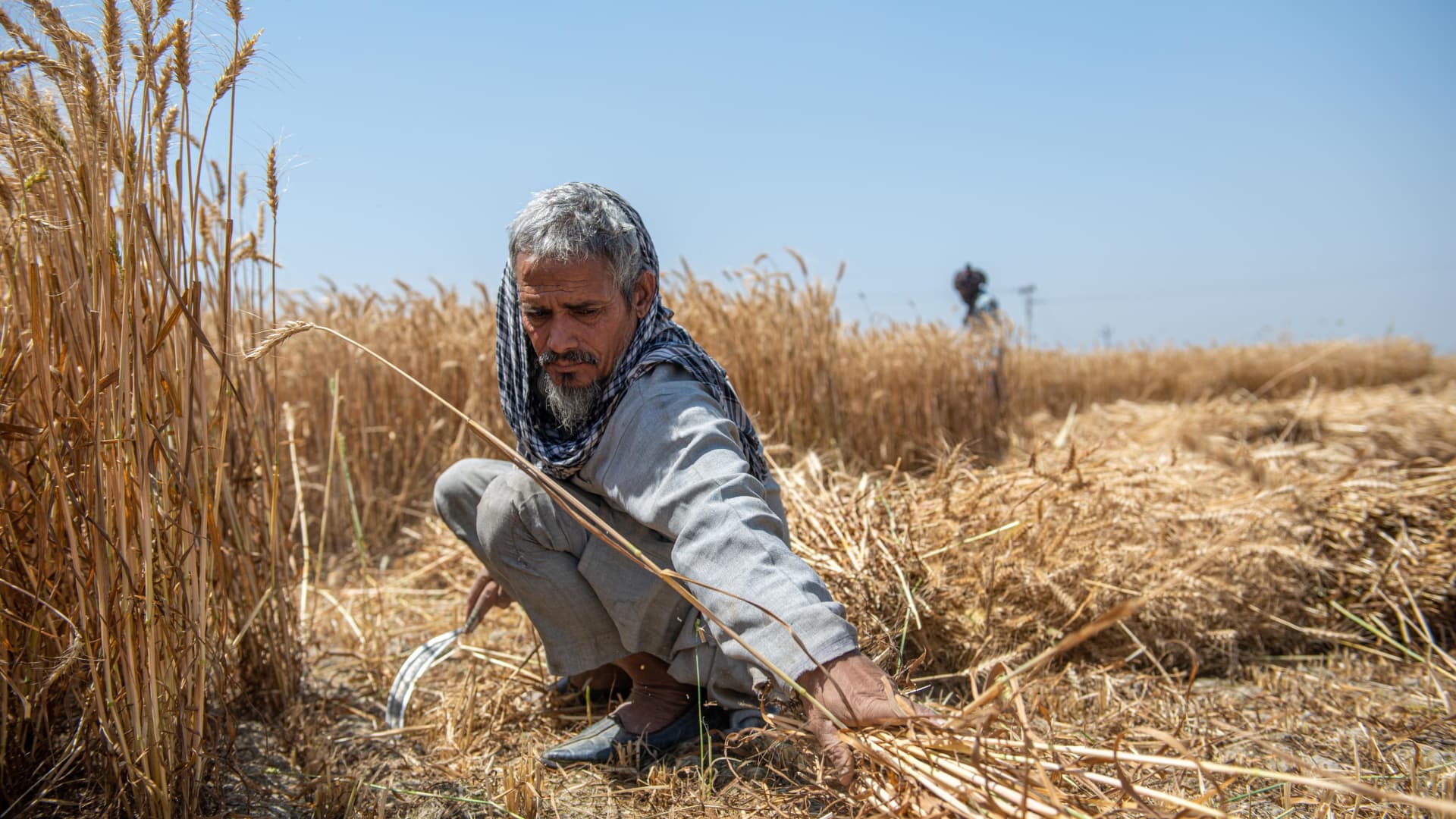An elderly man collects fresh cherries in a field on the outskirts of Srinagar on 28 May, 2018.
Sopa Images | Lightrocket | Getty Images
India’s elderly population is predicted to double by 2050 and overtake the number of children in the country, according to the United Nations Population Fund.
The number of people aged 60 and above will increase from 149 million in 2022 to 347 million in 2050, the UNFPA said in a report earlier this week.
The study also showed that by 2046, the elderly in India will outnumber children aged 0 to 14 years old, and there will be a decline in people aged 15 to 59 years old.
The South Asian nation is the world’s most populous country and currently has the largest youth population with 65% of Indians under 35 years old.
However, predictions from the United Nations agency showed that although India’s overall population will increase by 18% from 2022 to 2050, its elderly population will jump by 134%, and those aged 80 and above will leap by 279% during the same time.
“By 2050, one in every five individuals will be an elderly in India,” the UNFPA said.
India is not alone and the rest of the world will experience the same issues.
The amount of people aged 60 years and above worldwide is forecasted to double and hit 2.1 billion by 2050, the UNFPA said.
“This increase in the number and share of older persons will be visible across all regions of the world,” the report stated, highlighting that less developed regions will see a marginally higher increase in its elderly population.
Incoming setbacks
The rise in India’s aging population will cause a slew of socio-cultural and economic challenges.
The UNFPA highlighted that there will be an increase in the number of widows since women generally live longer than men.
“The number of older women compared to the number of older men will progressively increase with advancing ages from 60 through 80 years and therefore, policies and programmes must especially focus on the special needs of these very old women.”
Women in rural India will also be more affected compared to those living in urban regions due to the isolation they will face, poor transportation making it difficult to travel from one place to another, income insecurity and a lack of proper health care, the study said.
“Elderly widowed women are often alone with little support and also experience greater incidence of morbidities that are functionally restricting,” the report said.
A 60-year-old harvests wheat crops at a field in Ghaziabad district of Uttar Pradesh on April 3, 2021.
Sopa Images | Lightrocket | Getty Images
Little or no income coupled with rising health care costs will also place a huge burden on the country’s aging population, it said.
According to the 2018 edition of the Longitudinal Ageing Study in India that was cited in the UNFPA report, 51% of men aged 60 and above worked, but only 22% of women did so.
There was also a higher rate of work participation in older people from rural areas (40%) compared to urban parts (25.6%) where many rural elderly held agriculture jobs such as farming, fishery or forestry.
“Aging is directly associated with economic dependency given loss of income coupled with increased healthcare expenditure. Low participation in the formal economy restricts access to fixed pension and increases economic insecurity,” UNFPA said.

